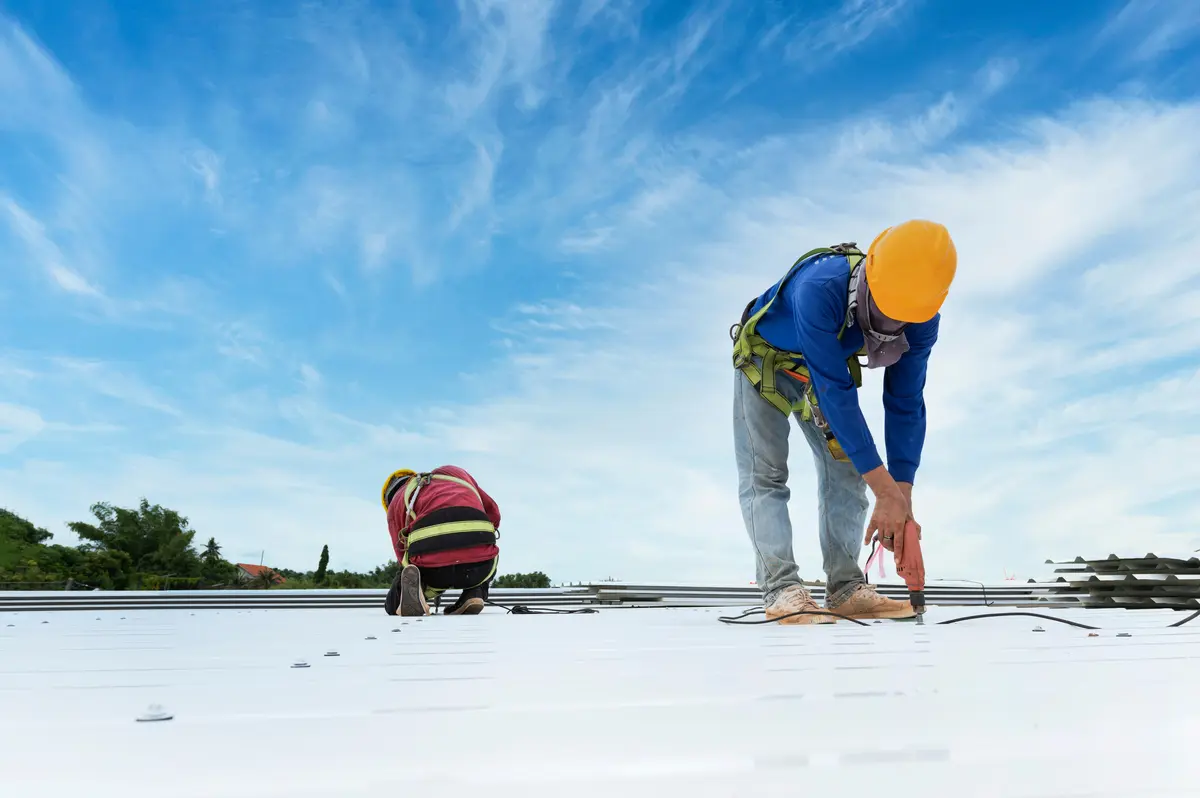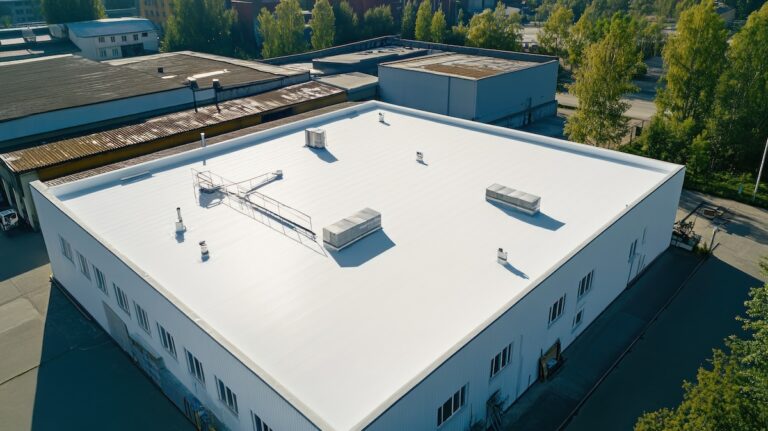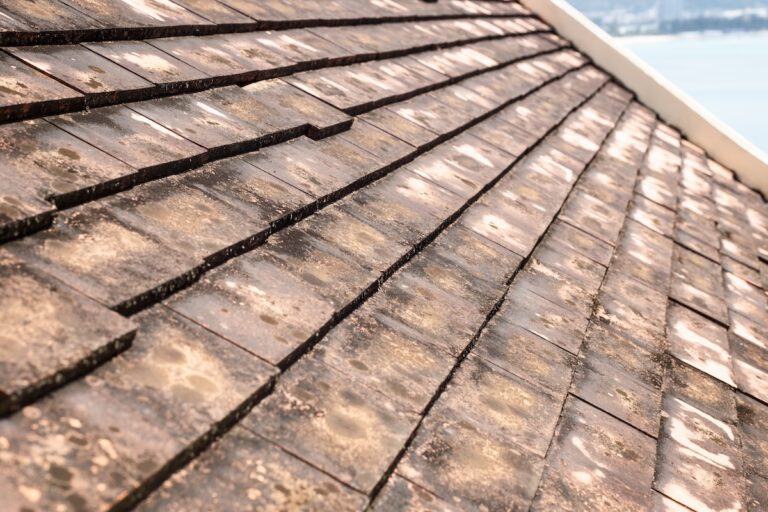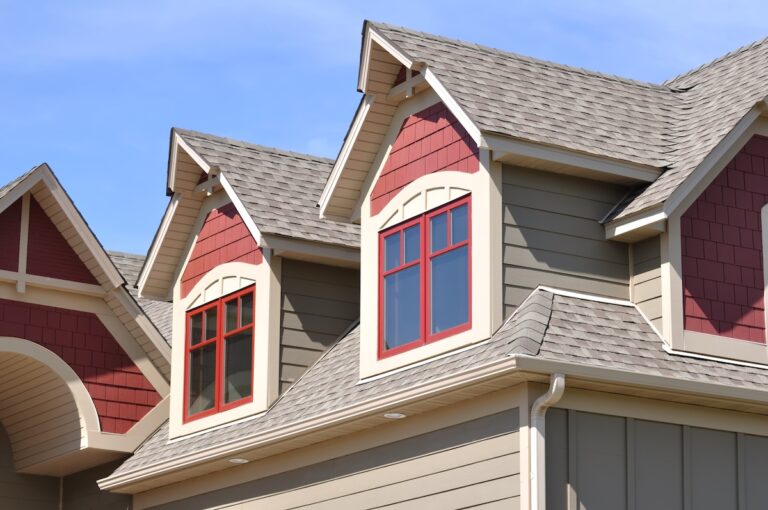Commercial roofs are the unsung heroes of our buildings, quietly protecting us from the elements while enduring relentless sun, rain, wind, and snow. For building owners and facility managers, understanding the intricacies of commercial roof maintenance is a key responsibility that can significantly impact the longevity and safety of the property.
This article is designed to explore:
- Whether commercial roofs are truly low maintenance
- The risks of neglecting them
- Essential maintenance tasks
- The importance of professional contractors
- Signs that it’s time to call in expert help
The Myth of Low-Maintenance Commercial Roofs
At first glance, commercial roofs might appear to require little upkeep. Designed to be robust and durable, they often come with warranties that promise many years of service. However, the idea that they are entirely “low maintenance” is misleading. While they are built to withstand harsh conditions, regular maintenance is crucial to ensure they perform optimally throughout their lifespan.
A well-maintained commercial roof not only safeguards the structural integrity of your building but also enhances energy efficiency and can prevent costly repairs or replacements down the line. Ignoring this aspect can lead to serious consequences that outweigh the perceived convenience of a low-maintenance mindset.
The Perils of Neglecting Commercial Roof Maintenance
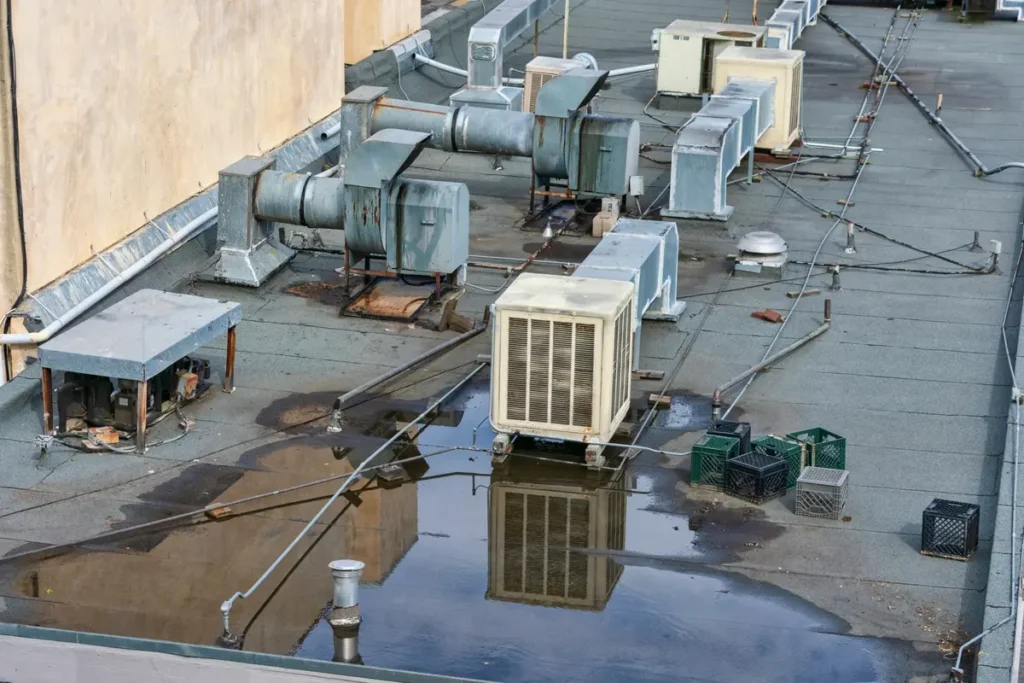
Neglecting commercial roof maintenance can result in significant risks, both structurally and financially. Here are some dangers that building owners and facility managers should be aware of:
- Water Damage: Without regular inspections and maintenance, small leaks or cracks can quickly escalate into significant water damage, affecting insulation, electrical systems, and interior spaces.
- Structural Compromise: Over time, undetected issues, such as standing water or compromised seams, can weaken structural components, posing safety hazards.
- Increased Energy Bills: A poorly maintained roof can lead to inadequate insulation, causing your heating and cooling systems to work harder and increasing energy costs.
- Decreased Property Value: Potential buyers or tenants are likely to be deterred by visible signs of roof neglect, impacting your property’s market value.
- Voided Warranties: Many roofing warranties require proof of regular maintenance. Failure to comply can result in voided warranties when you need them most.
5 Key Commercial Roof Maintenance Tasks
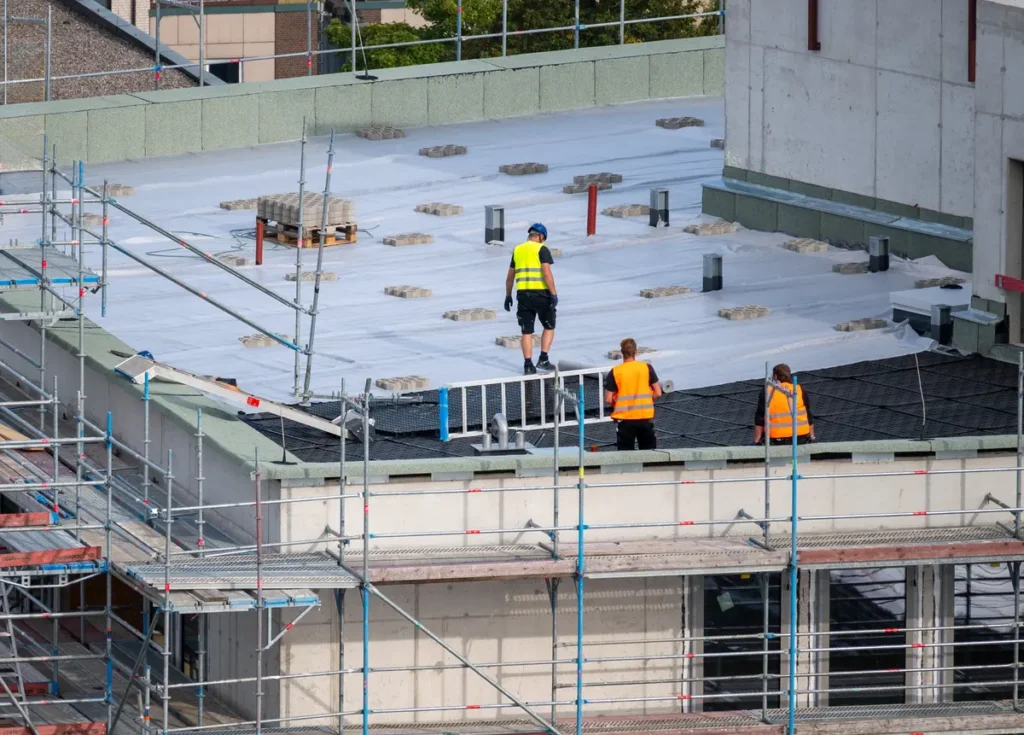
To avoid the pitfalls of neglect, building owners and facility managers should implement a proactive maintenance routine. Here are essential tasks and recommended frequencies:
1. Regular Inspections
- Frequency: Twice a year, preferably in spring and fall, and after severe weather events.
What to Look For:
- Cracked, blistered, or missing roofing materials
- Pooling water or inadequate drainage
- Punctures or tears in the membrane
- Signs of mold or mildew
2. Cleaning and Debris Removal
- Frequency: Quarterly or as needed
Tasks:
- Remove leaves, branches, and debris from the roof surface and gutters.
- Ensure drains and downspouts are clear and functioning properly.
3. Repairing Minor Damages
- Frequency: As needed, based on inspection findings.
Tasks:
- Patch small holes or cracks promptly.
- Reinforce weak or deteriorating areas.
4. Checking Flashings and Sealants
- Frequency: Annually or after severe weather
Tasks:
- Inspect and reseal roof penetrations, such as vents and skylights.
- Ensure flashings are secure and undamaged.
5. Maintaining Roof Equipment
- Frequency: Annually
Tasks:
- Inspect and service HVAC units, solar panels, and other equipment to prevent damage to the roof surface.
- Ensure proper installation and sealing around equipment mounts.
The Importance of Partnering with a Professional Roofing Contractor
While some maintenance tasks can be managed in-house, partnering with a professional roofing contractor offers several advantages:
- Expertise: Experienced contractors have the knowledge and skills to identify potential issues that untrained eyes might miss.
- Safety: Roofing work can be dangerous without proper equipment and training. Contractors adhere to safety standards to prevent accidents.
- Quality Repairs: Professional contractors ensure repairs are done correctly, minimizing the risk of recurring problems.
- Documentation: Contractors provide detailed maintenance records that can be invaluable for warranty claims and property assessments.
Recognizing Signs You Need a Roofing Contractor’s Help
Even with regular maintenance, there may come a time when professional intervention is necessary. Here are some signs that indicate it’s time to call in a roofing contractor:
- Persistent Leaks: If leaks continue despite patching efforts, it may indicate deeper issues that require expert investigation.
- Visible Sagging: Sagging roof sections suggest structural compromise and necessitate immediate professional assessment.
- Unusual Energy Bills: A sudden spike in energy costs can point to insulation issues related to the roof.
- Storm Damage: After a severe storm, a professional inspection ensures any damage is identified and addressed promptly.
- End of Warranty: As the warranty period nears its end, a thorough inspection by a contractor can identify any covered repairs before coverage lapses.
Join Our Routine Commercial Roof Maintenance Services
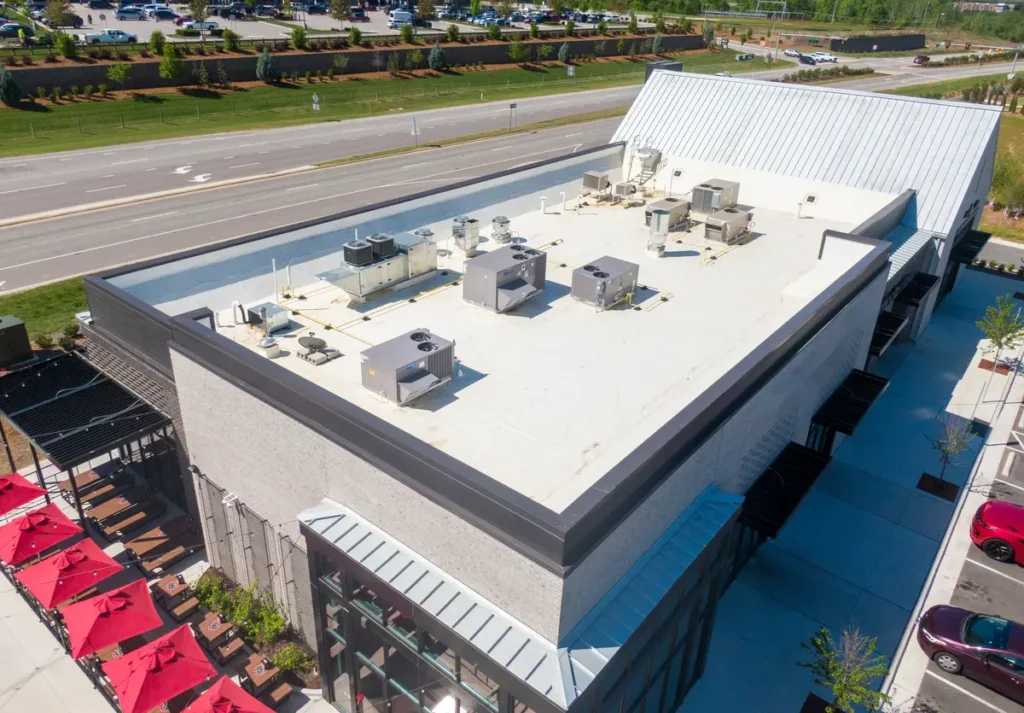
Maintaining a commercial roof is not just about preserving aesthetics; it’s about protecting the entire building and its occupants. By understanding that commercial roofs are not entirely low maintenance and recognizing the dangers of neglect, building owners and facility managers can take proactive steps to implement a robust maintenance routine. Partnering with professional roofing contractors further enhances this effort, ensuring long-term roof health and peace of mind.
Don’t wait until a small issue becomes a costly problem. Prioritize commercial roof maintenance today, and you’ll be safeguarding your investment for years to come. Start by scheduling a professional inspection with the team at G. Cannon and take the first step toward a secure and efficient building environment.
